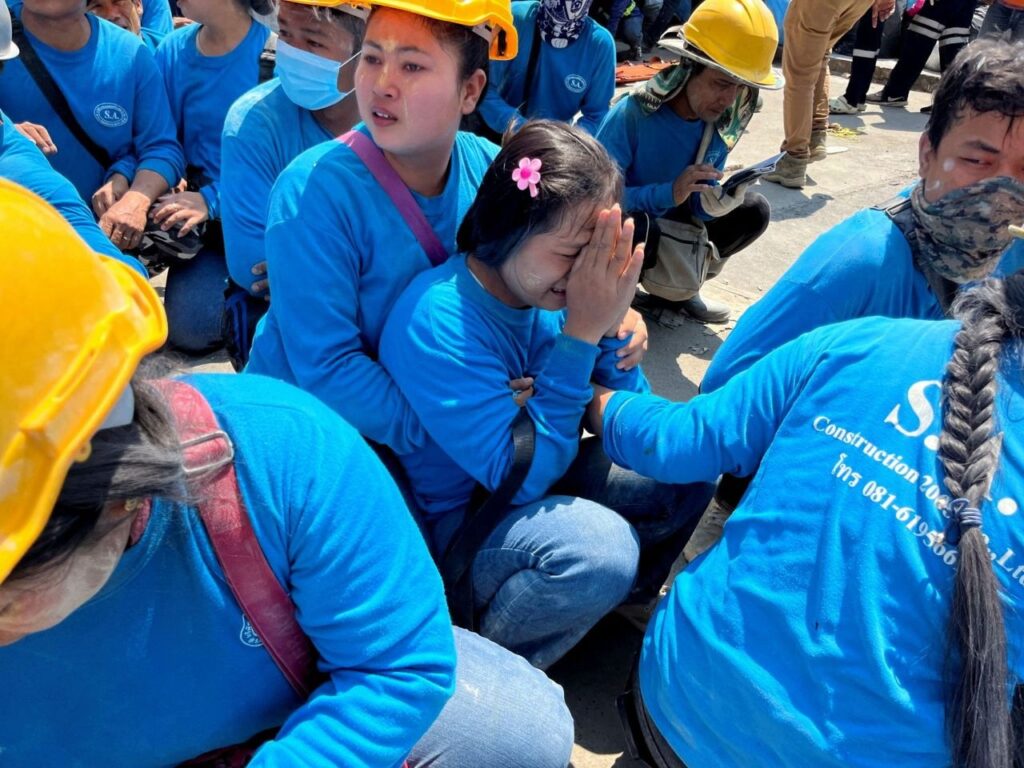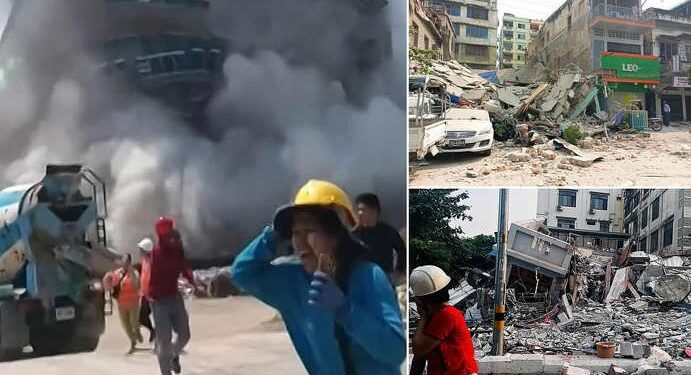Thai authorities are requesting international aid as rescuers work to free 50 people trapped under a collapsed building following a powerful earthquake near Myanmar. Stay updated on the latest developments.
A powerful earthquake struck the region near Myanmar, causing widespread damage in northern Thailand. The earthquake, which measured 6.8 on the Richter scale, has left multiple buildings collapsed, but the most severe incident has occurred in the city of Chiang Rai. Approximately 50 individuals are trapped under the rubble of a building that collapsed during the quake, prompting Thai authorities to call for immediate international assistance in their ongoing rescue efforts.

The earthquake struck late in the evening, around 9:30 PM local time, and was felt across multiple regions in Thailand, Myanmar, and Laos. The epicenter of the quake was located about 100 kilometers from the Thai border, near the city of Tachileik, Myanmar, which sits at the heart of a seismically active zone. While the initial tremor lasted only a few minutes, its destructive power caused significant infrastructure damage, especially in remote areas.
In Chiang Rai, one of the worst-hit areas, several buildings collapsed, with the worst devastation seen in a five-story commercial structure. Rescuers were quickly deployed to the site, and emergency teams from local authorities, the military, and volunteer groups rushed to search for survivors. However, the situation quickly became dire when reports confirmed that 50 individuals were still trapped under the debris, many of them believed to be workers and residents of the building. With the risk of further aftershocks and the complicated nature of the debris, the rescue mission was significantly hampered.
As local rescue teams struggled to reach the trapped victims, Thai authorities turned to the international community for help. With the scale of the disaster becoming increasingly clear, officials issued a formal request for international aid, asking for specialized rescue teams, equipment, and resources. The Thai government reached out to neighboring countries, including Myanmar, Laos, and China, as well as international organizations such as the United Nations, to assist in the critical search and rescue operations.
“We are doing everything we can with the resources at our disposal, but we need more help,” said General Suriya Jangpakdee, the head of the National Disaster Prevention and Mitigation Department. “The building’s collapse has caused significant structural challenges for our rescue teams. We need international expertise and equipment to speed up the operation and save lives.”

The Thai government has also mobilized emergency medical teams, as it anticipates a growing need for hospitals and triage centers. Thousands of residents in the affected areas have also been displaced, with many seeking shelter in temporary camps set up by the government. In addition to immediate rescue efforts, Thai officials have expressed concerns over the potential for aftershocks, which could further complicate the ongoing recovery efforts.
In response to Thailand call for help, neighboring countries have swiftly mobilized. Myanmar’s military has pledged to send rescue teams, and Laos has dispatched emergency teams to assist in the recovery efforts.
The United Nations has also offered support, providing search-and-rescue teams with specialized equipment, including search dogs and tools designed to navigate collapsed structures. Several international non-governmental organizations (NGOs) have also pledged to provide humanitarian aid, including food, water, and medical supplies.
In addition, countries like the United States, Japan, and South Korea have expressed their willingness to assist with any available resources, whether through their own search-and-rescue teams or by sending supplies. Japan’s disaster management agency, known for its expertise in earthquake recovery, has offered to send personnel with experience in dealing with collapsed buildings.
The situation remains tense as rescuers continue to work around the clock in hopes of finding survivors. Time is of the essence in such rescue operations, and the next 24 to 48 hours are crucial. The Thai government has promised to spare no effort in its mission to rescue those still trapped. As the global community rallies behind Thailand’s efforts, the hope is that more lives can be saved before conditions worsen.

Rescue teams have expressed cautious optimism, with some reports indicating that faint sounds of survivors may be coming from under the rubble. While hopes remain high, the reality of the situation is grim, as the complexity of the debris and the constant aftershocks make the task increasingly dangerous for both rescuers and survivors.
As the situation unfolds, the world watches closely. Thailand’s efforts to free those trapped in the collapsed building are at the forefront of international attention. The global community’s swift response to Thailand’s call for help is a testament to the solidarity and shared humanity that unites us in times of crisis. While much work remains to be done, the collaboration between nations brings hope that more lives can be saved, and recovery can begin as soon as possible.
Read Also : March 28, 2025: Powerful 7.7 Magnitude Earthquake Strikes Myanmar















 Categories
Categories









